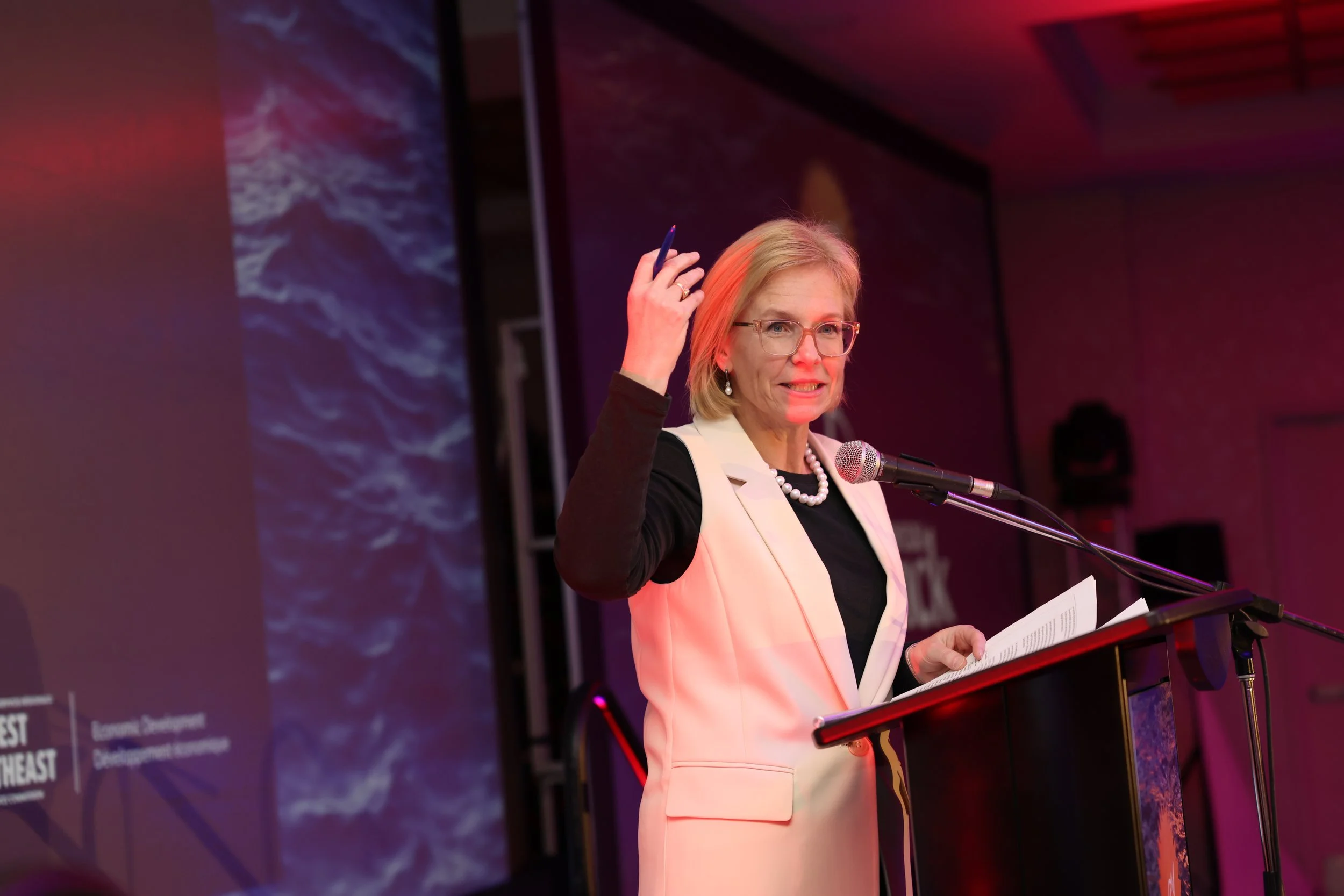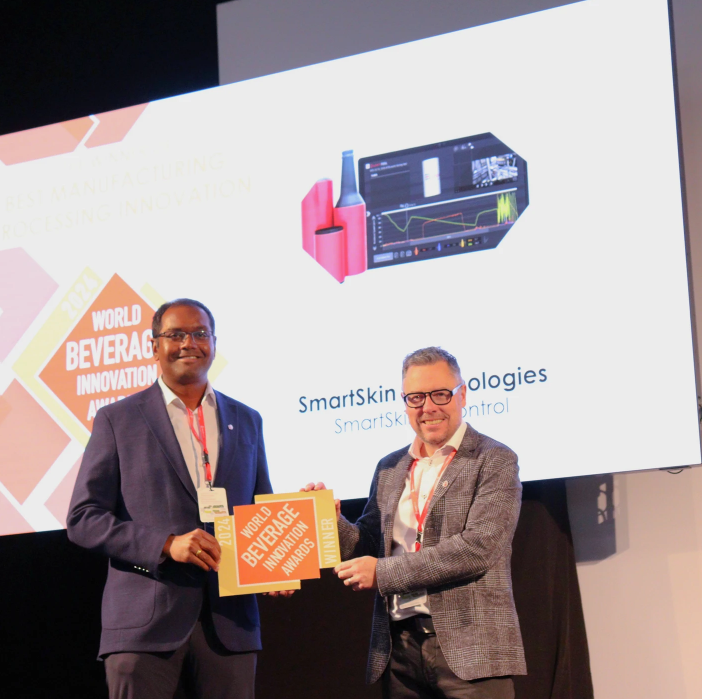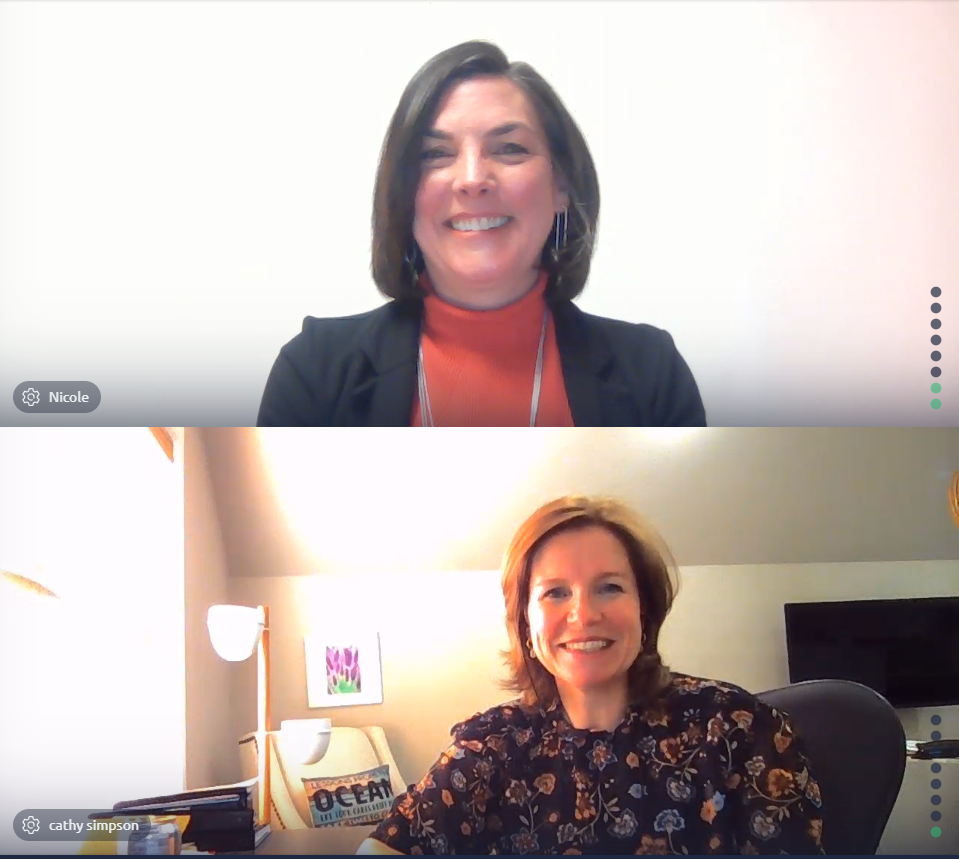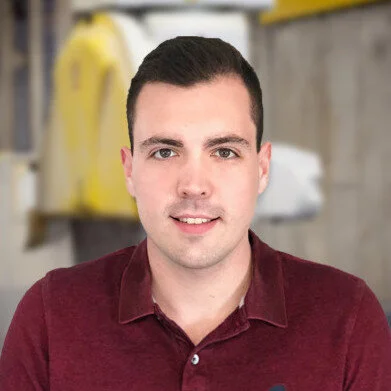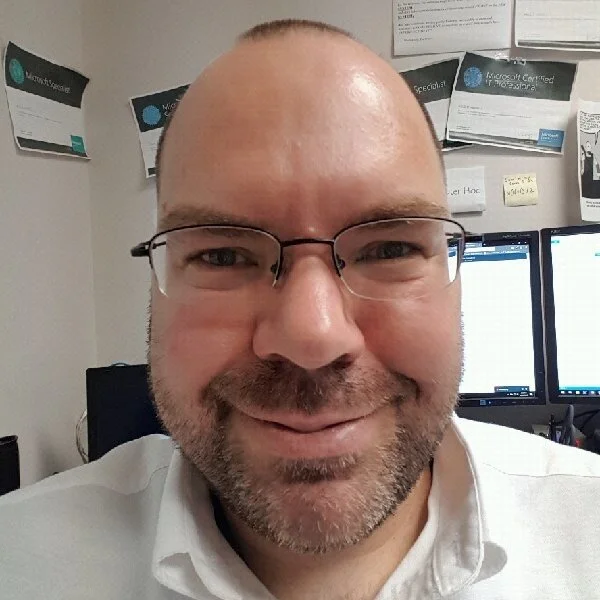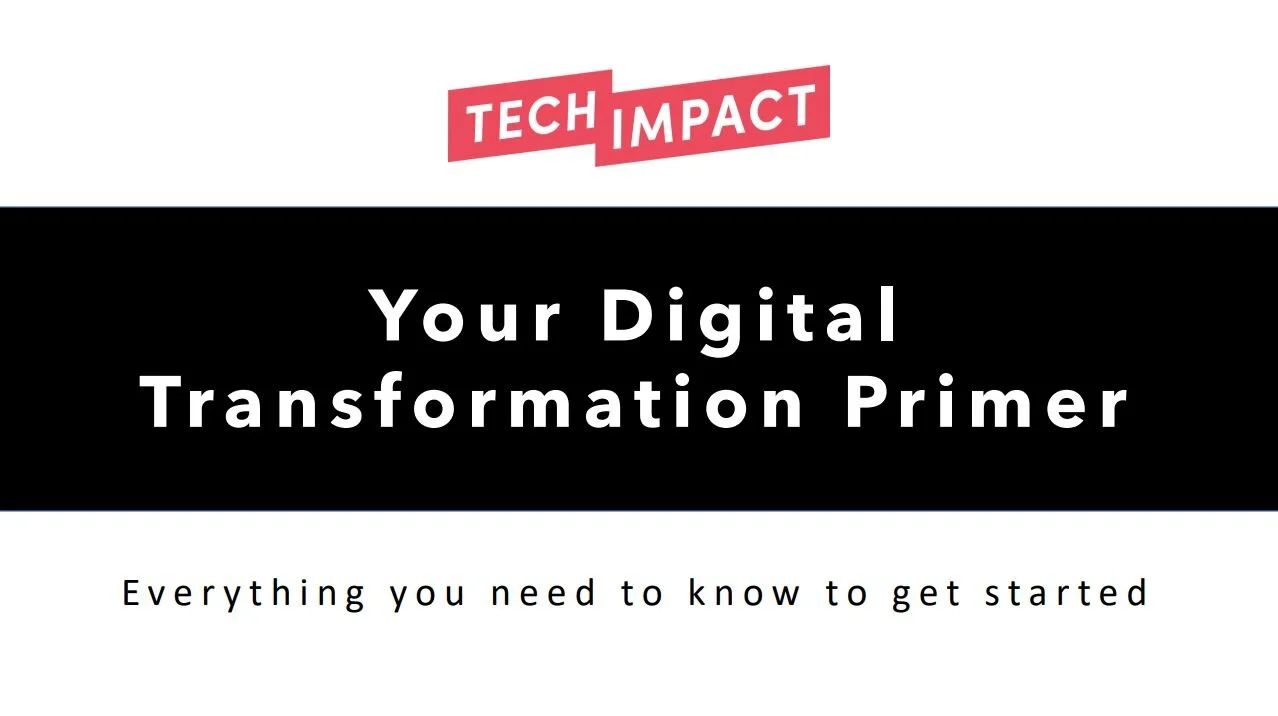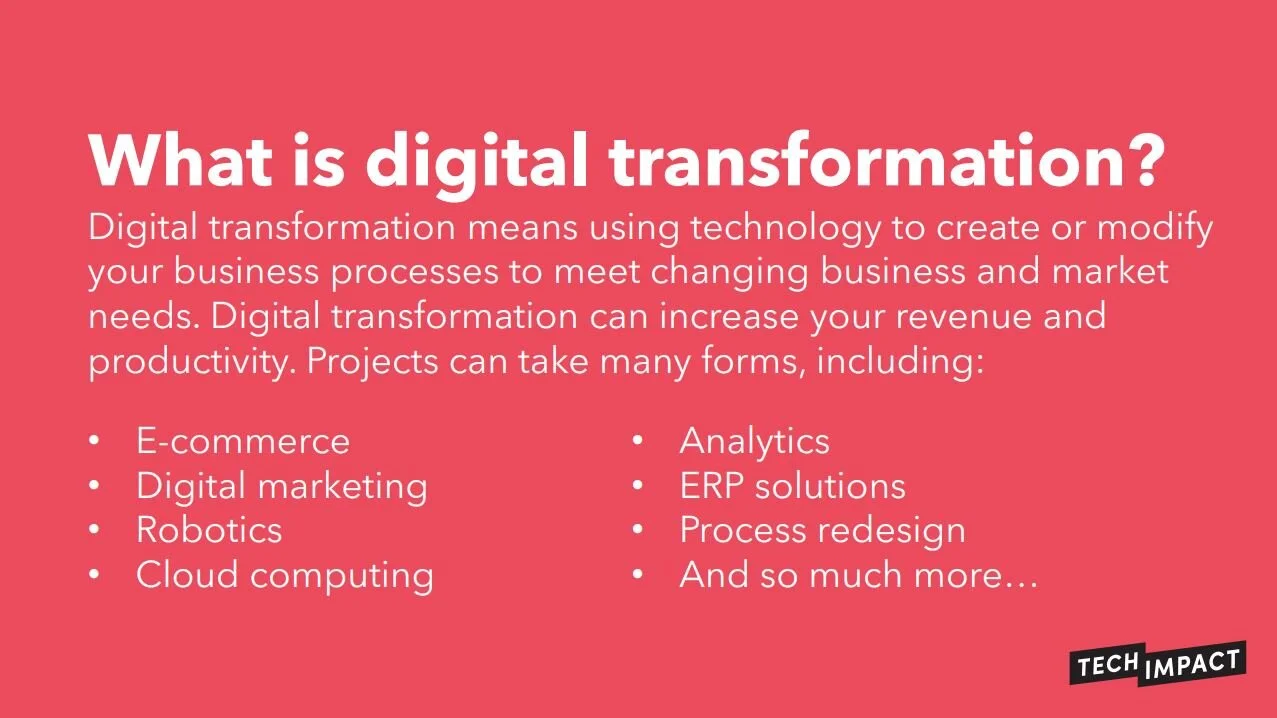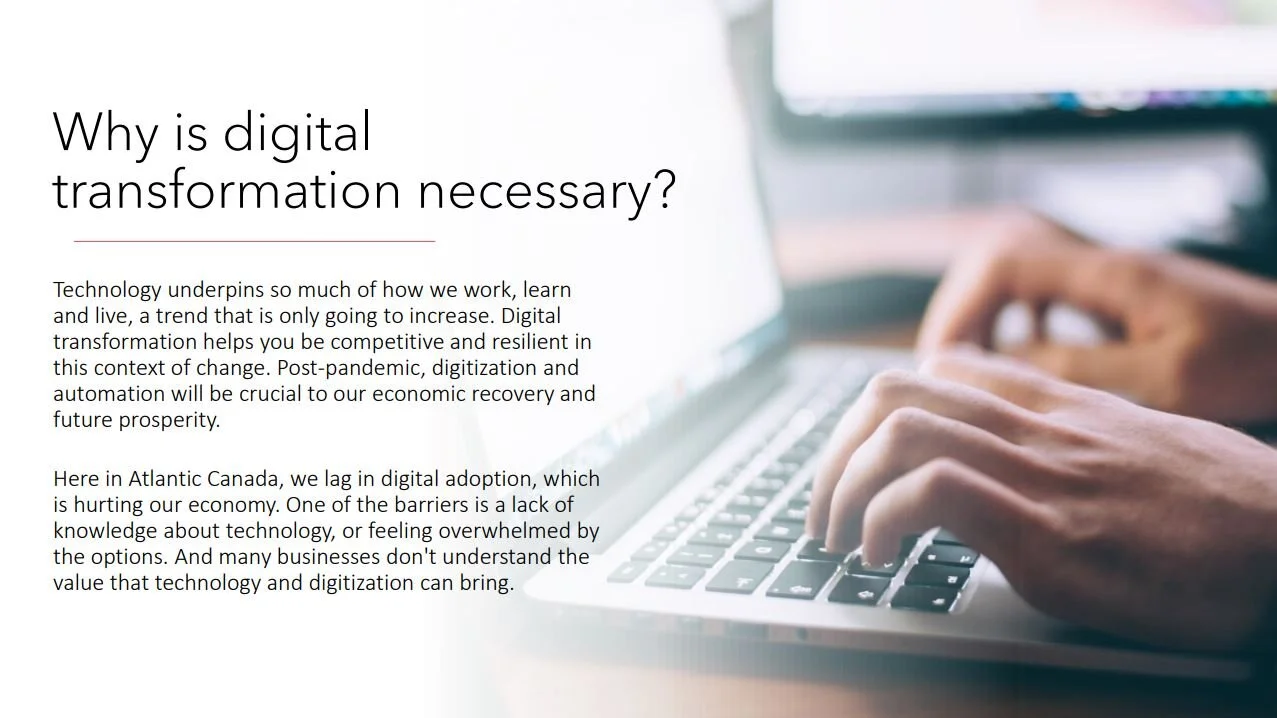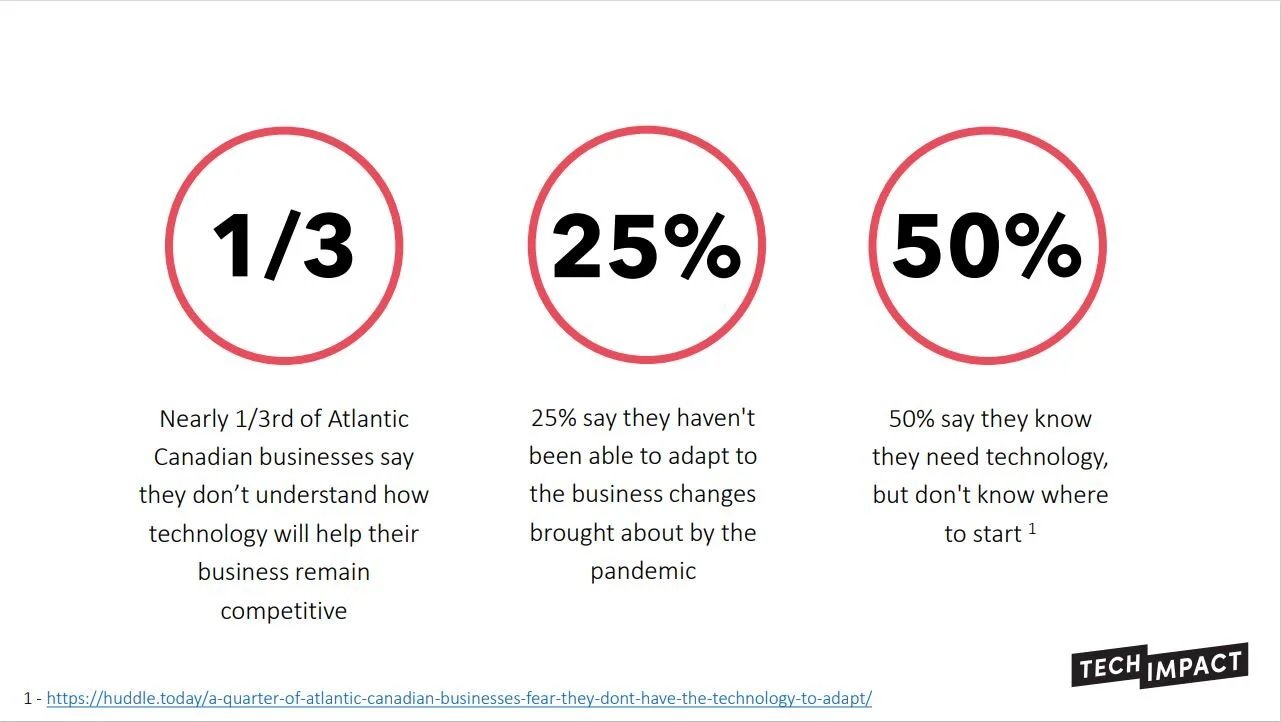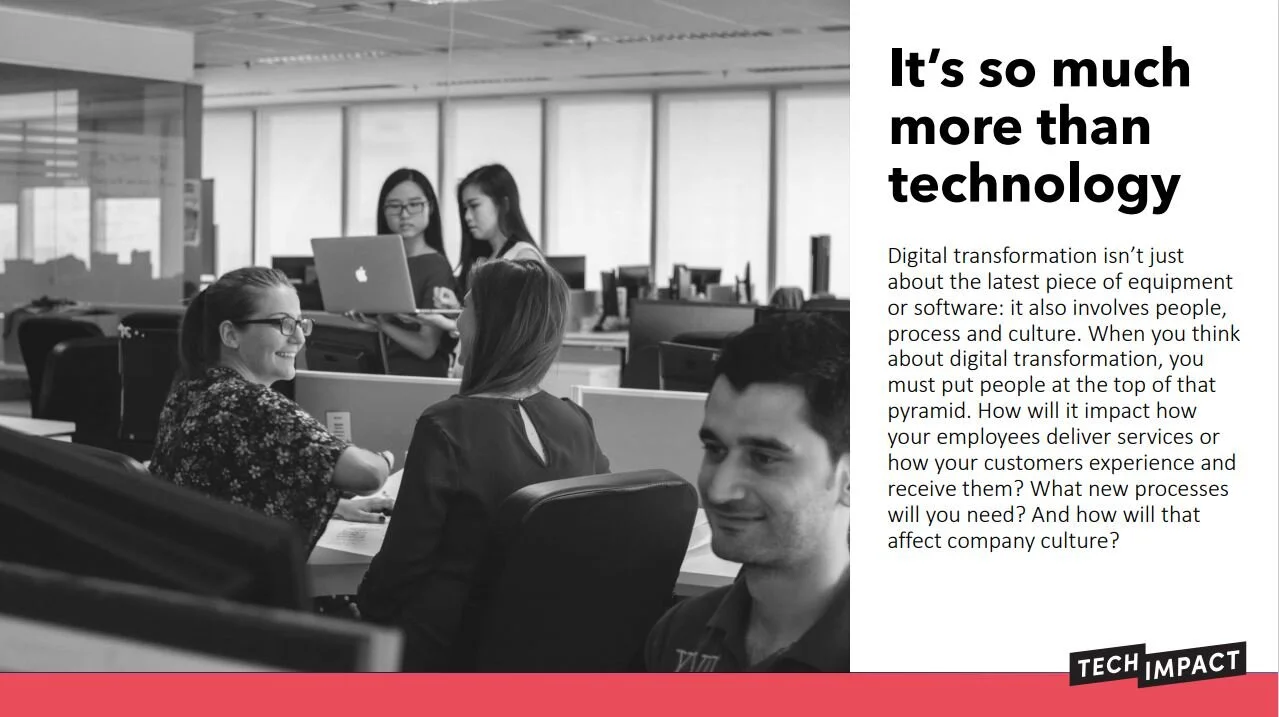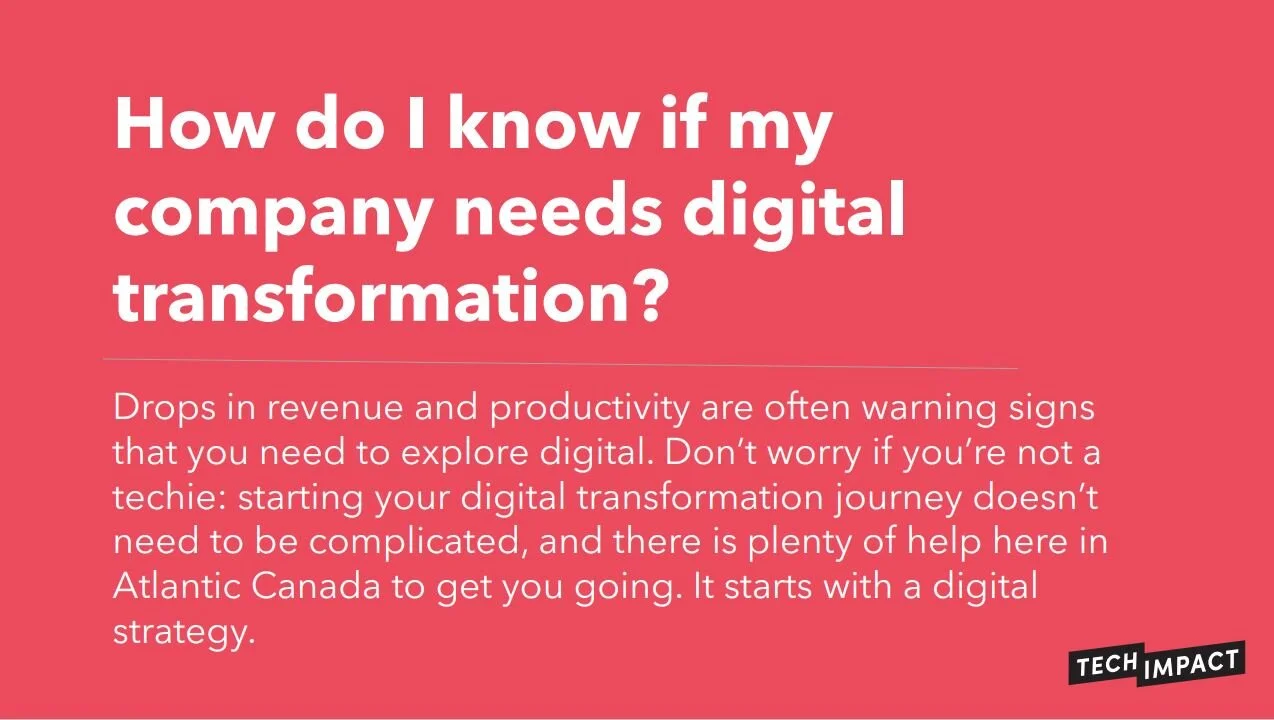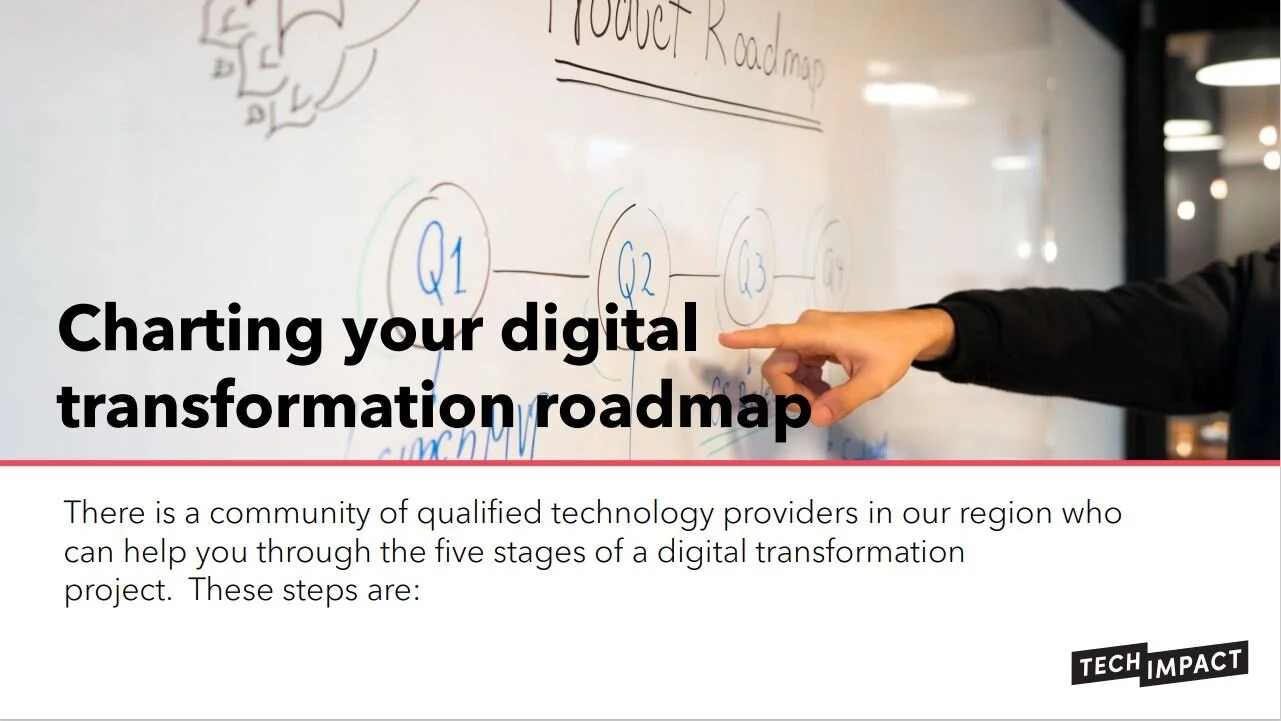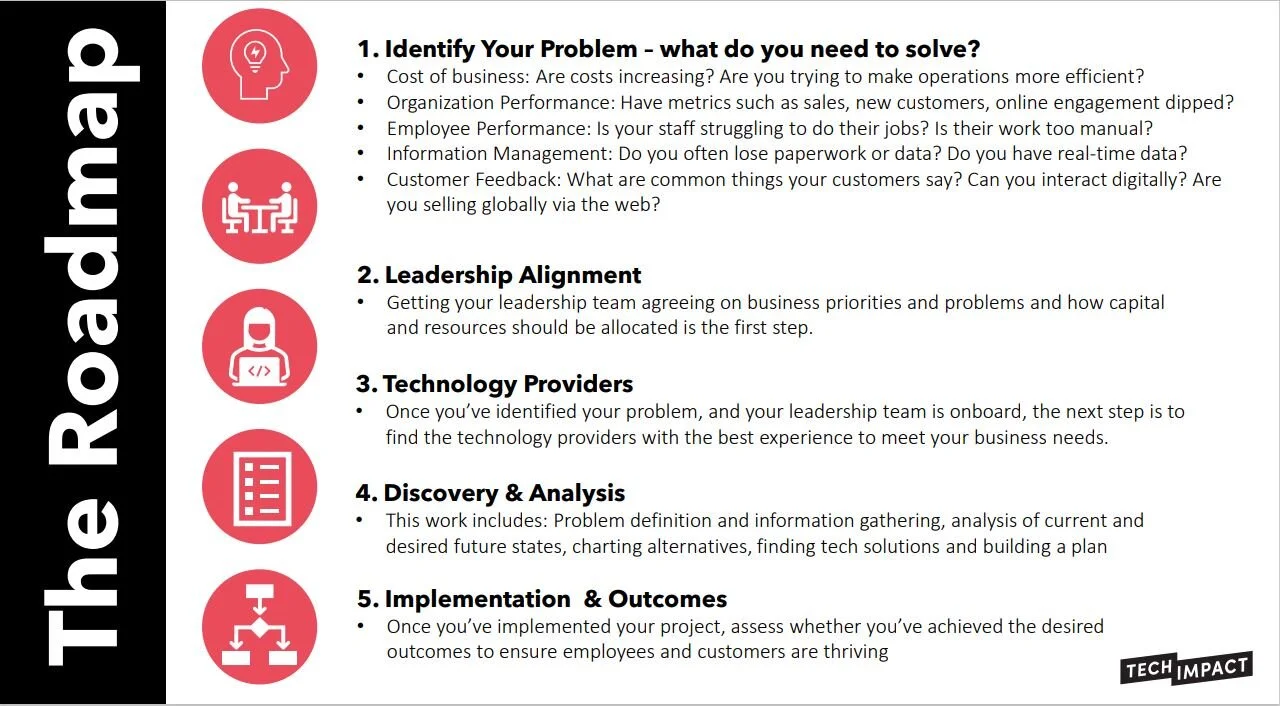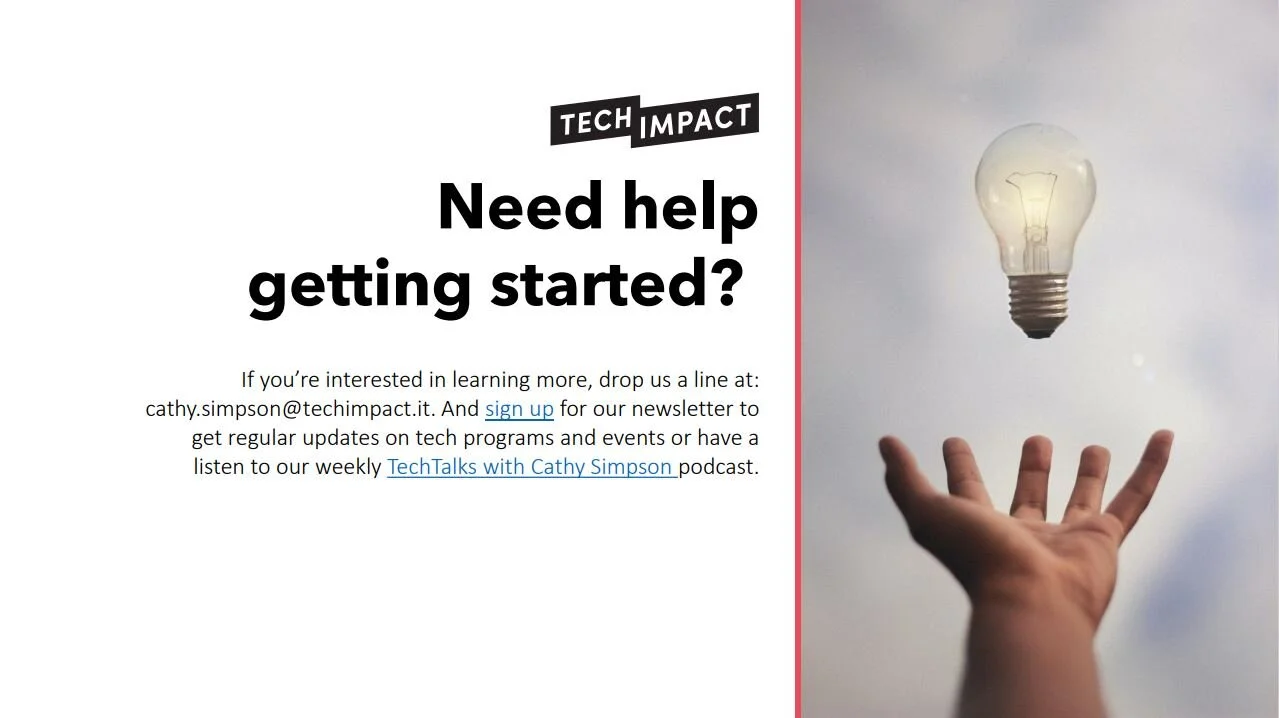It’s been a big month here at TechImpact, as we launch Digital Boost 2.0, our bold new program to drive technology adoption in small to medium-sized New Brunswick businesses. Applications are being accepted starting April 21.
This project is possible thanks to $3.7 million from ACOA, the Atlantic Canada Opportunities Agency. This week on the TechTalks podcast, I’ve got two stellar staff members from ACOA on the show with me to dive into why this program specifically and digital adoption, in general, is so important.
Meet My Guests
First, let me introduce my guests, Kalie Hatt-Kilburn, Director General of Regional Operations, ACOA New Brunswick, and Trevor Macausland, an Economic Development Officer with ACOA’s Innovation, Trade and Business Growth team.
Kalie and Trevor embody the best in the public service: deep industry knowledge, a passion for business, especially entrepreneurship, and years of hands-on experience in economic development.
“It is a tremendous place to work,” Kalie says. “It is full of people that are deeply committed to this region and seeing our companies prosper and our communities flourish.”
The COVID Context
We kicked off by talking out how ACOA, as a regional development agency, is a “very nimble tool for the federal government to be able to deliver responsive programming,” as Kalie says.
Of course, COVID-19 has necessitated the swiftest, most significant response of all. Companies struggled with the seismic shifts it brought to all facets of their operations while many were also dealing with revenue drops and worrying about survival.
As ACOA stepped up to help companies adapt and stabilize, the predominance of the need for digital and automation solutions was striking.
“We saw the opportunity to give a boost,” Kalie says. “And that's why we call this program Digital Boost, isn't it? To enable them to make that pivot sooner with some support, while also focusing on survival and sustainability.”
The Transformation Was Already Underway
ACOA had been looking at digital transformation for a while when COVID hit.
“Prior to the pandemic, we were already working internally to raise awareness of the benefits of leveraging technology in order to be more productive and efficient and increase the customer experience,” Trevor says.
COVID was an accelerant in making digital top-of-mind. Still, many businesses struggle to start the shift.
“They're trying to walk and chew gum at the same time,” Kalie says, “to make this transition while also keeping their companies going.”
And then there’s the challenge of where to turn for help. “If you don't have that expertise in-house, it's a daunting prospect to see where do you start and how do you start?”
Enter Digital Boost 2.0
When it comes to digital adoption, there are risks to action as well as inaction.
“If you don't have a plan of how you're going to proceed over time, then you can have some more random acts of digital or random acts of automation, and it doesn't knit together in a cohesive plan,” Kalie says.
DB 2.0 pairs businesses with qualified local Atlantic Canadian technology providers to create a digital strategy and roadmap, which creates a win-win for both the company and the technology provider. Through the program, businesses can receive up to $20,000 to do this work or 75% of the costs (maximum of $26,600), with the businesses paying the remaining 25%. (To learn more or to apply, click here).
Here at TechImpact, we’re proud to leverage our knowledge and connections to be the trusted industry intermediary between government, companies and service provides.
“The real critical piece is having some trust and faith in the expertise that you're accessing,” Kalie says.
The Big Picture
Digital Boost 2.0 will give businesses clarity and confidence in their digital journey by giving them a tailored plan to adopt things like automation and AI. Along with being more competitive, productive and better able to attract talent, there are other, bigger benefits, as well.
“What we're really looking at here is outcome transformation for these clients,” Trevor says. It’s a chance to examine their current and desired future states and bridge the gap. That means looking beyond just technology or software at skill sets, culture and people.
And for ACOA, the program is also a great chance to have informed conversations with clients to determine how to invest in the short-, medium- and long term, Trevor says, “to set them up to scale and grow and export and become more resilient in the new normal.”
The Collab Hub
When we launched the Digital Boost pilot project last year, we learned a lot. And one of the big messages from small and medium-sized businesses was that they know they need to adopt technology but struggled to find the right technical and digital help.
That’s how the Collab Hub (our working title for now) was born. We are in the early planning phases for this exciting project. It’s an online platform and resource for non-tech businesses looking for local IT service providers.
“It takes a village to raise a company,” Trevor says. “What we're trying to do is add more voices and more resources to it.”
These are exciting times for our region and our industry, and, as my conversation with Kalie and Trevor shows, government has a huge role to play in accelerating our recovery. Check out our entire conversation by clicking here to listen.
And here are some of the highlights from this episode:
[05:48]: Kalie on ACOA’s dynamic, responsive role in supporting economic development.
[17:13]: Trevor describes ACOA’s interest in digital adoption even before the pandemic.
[21:23]: Kalie talks about some of the challenges businesses face in digital transformation.
[25:42] Trevor on how DB 2.0 focuses on equipping companies with a digital roadmap.
[30:07]: Kalie on TechImpact’s role in DB 2.0 as a trusted intermediary between funder, consultants and clients.
[42:18]: Trevor on the need for a collaborative, online community connecting SMEs, service providers and businesses.
[44:21]: Kalie on how ACOA looks for ways to create and facilitate digital spaces where stakeholders can connect.
Don't Miss an Episode.
Do you subscribe to the TechTalks With Cathy Simpson Podcast? You should! Every week, my guests and I cover many different topics around innovation, technology and the future. Click here to listen and subscribe in iTunes. You'll find us on Spotify, Apple Podcasts, Google Podcasts, PodLink and everywhere else you enjoy podcasts.
And sign up for our newsletter to never miss an update.

